
Does this situation sound familiar?
You’re finalizing a specification project or project plan for your client. You’ve identified opportunities to save costs by selecting thermally fused laminate (TFL) and laminates over wood veneers. Those substantial extra savings would free up funds in the budget, and let you really deliver the “wow” factor your clients want.
But…your customer has made it clear they want “real wood” and won’t settle for “cheap” materials and laminates.
As the expert, you know there are many high-quality, cost effective TFL and laminate products that actually offer better performance and durability than wood veneers, with authentic designs and textures that would impress even the most critical eye. So how do you bridge this knowledge gap for your customer, between what you know to be the best option for their needs, based on years of experience, and their outdated perception of TFL and laminate as an inferior product?
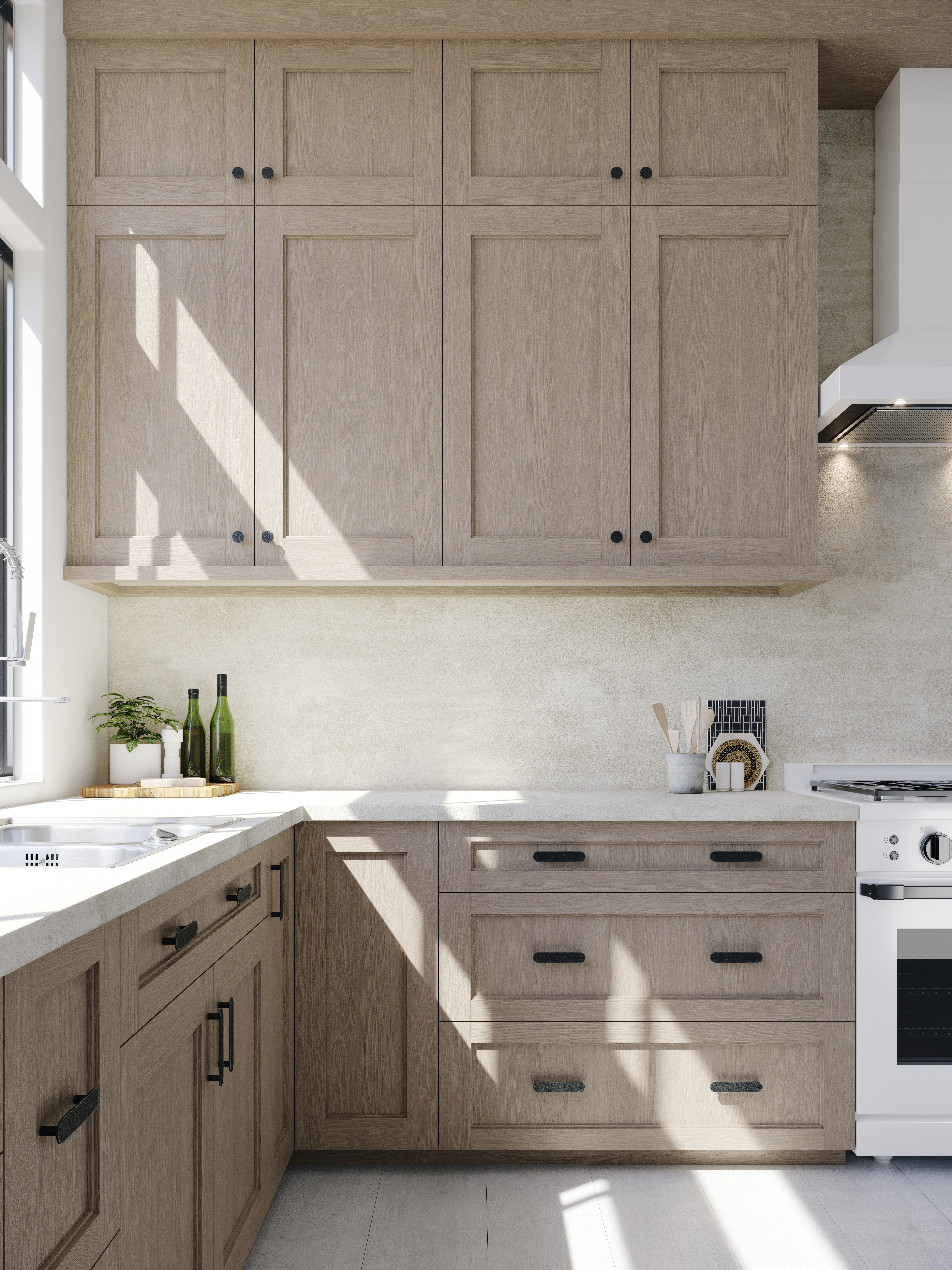
The first step to bridging the gap is understanding why your customers are objecting .
Are they worried their cabinets will start peeling in a year or two? Do they think the finish will look plastic-like and fake? Do they think this “cheaper” option will not hold up over time? Your customers may believe they understand the difference between wood veneers, TFL and laminates, but it’s possible they have misconceptions.
Once you understand their objections, take a look at our primer on the differences between wood veneers, laminates and TFL, then use it as a starting point to help your customer understand the product differences, so they can make the best decision for their needs.
Wood Veneers/Laminates/TFL—What’s the Difference?
All three of these decorative surface solutions are wood-based, but there are key differences in how they’re made, which affect the performance, durability and look of each. Let’s take a look.
Wood Veneers
Wood veneers are paper thin sheets of wood applied to an engineered wood substrate, such as medium density fiberboard (MDF) or plywood. Since solid wood is not dimensionally stable enough for many furniture and design applications, veneers are what many people mean when they say “real wood.” Indeed, they do capture the beautiful real wood look. But, there are drawbacks to wood veneers that may make other surfaces more suitable for your project, such as:

- Color fading from exposure to light
- Chipping and peeling
- Buckling or bubbling caused by moisture
Laminates
Laminates are constructed with a decorative paper on the surface and multiple layers of impact-resistant paper in the core. The papers are infused with resin and pressed together with heat and pressure. Essentially a decorative covering for a surface, they also must be applied to a substrate, such as particleboard or MDF. The multiple layers of paper, together with a wear-resistant overlay, make laminates highly durable and ideal for high-traffic/high-stress applications. Their flexible construction also makes them ideal for curved and postformed applications.
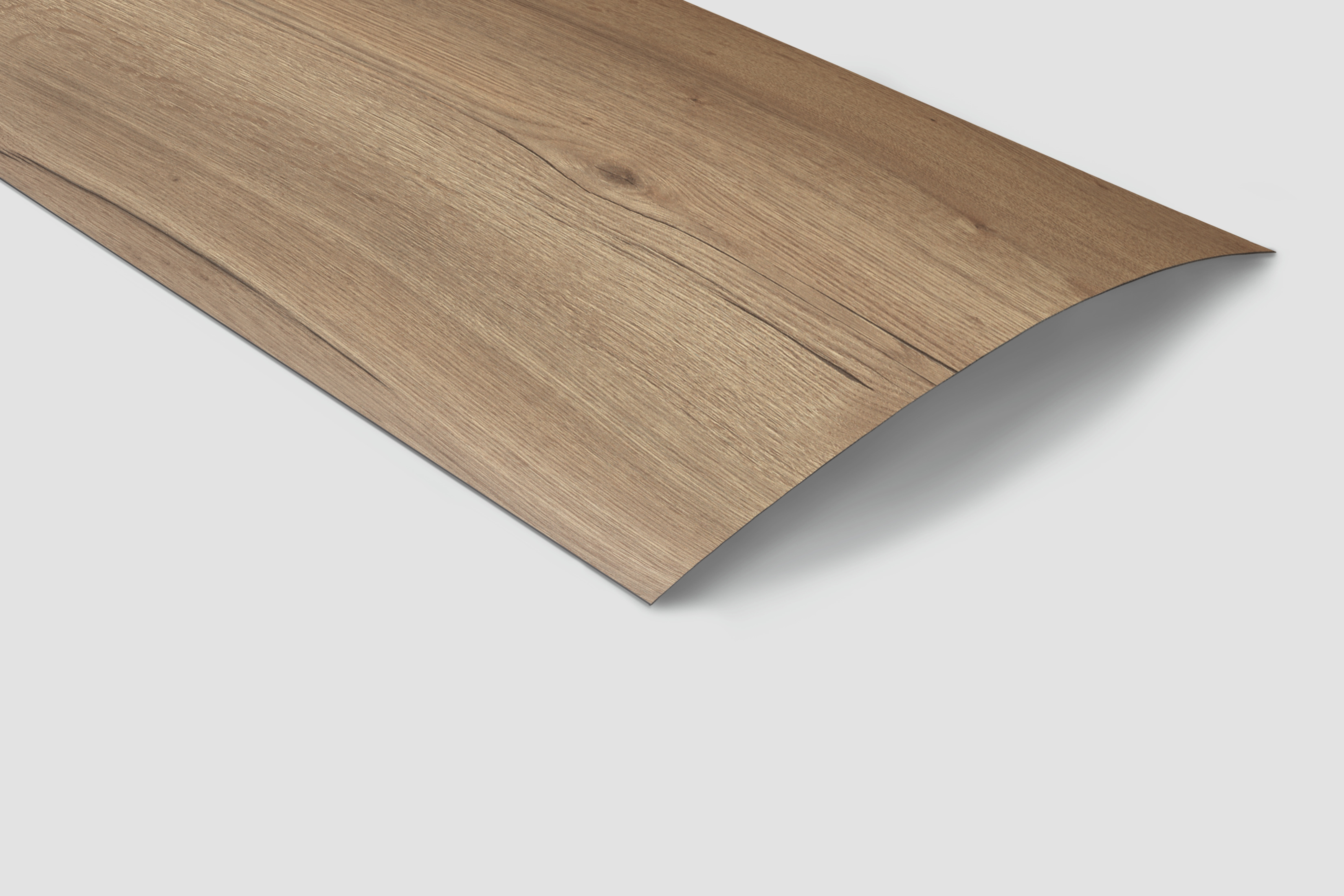
Laminates are available in a variety of designs—such as solid colors, woodgrain reproductions and material finishes like stone or metal—and textures, including ultra matte, high gloss and pearlescent finishes, or even embossed-in-register (EIR) woodgrain textures, which perfectly align the grain texture to the printed pattern for an exceptionally authentic appearance.
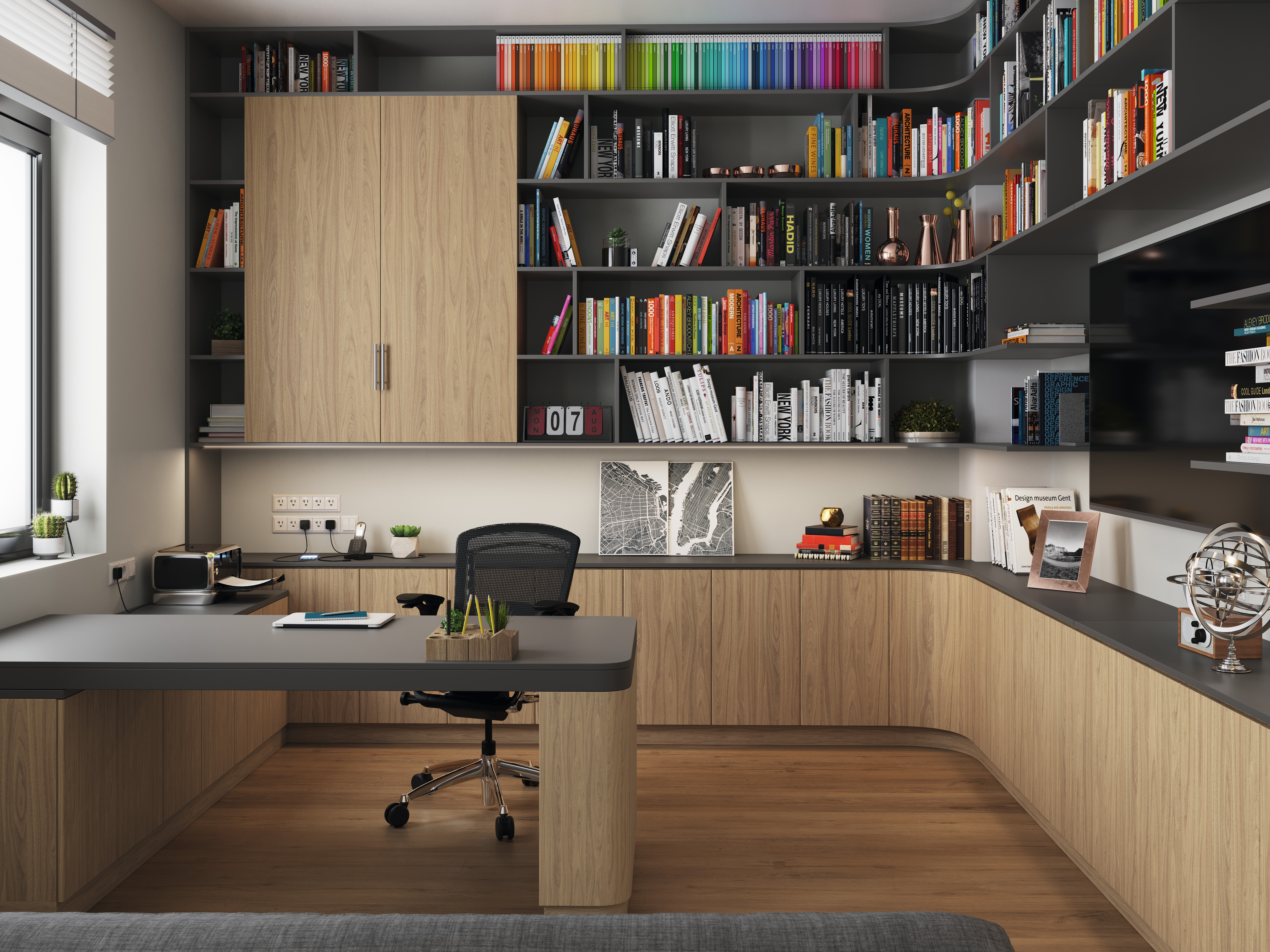
TFL is produced by fusing resin-impregnated decorative paper onto both sides of an engineered wood substrate, such as particleboard or MDF. Heat and pressure activate the resin, producing a pre-fabricated, finished panel with a nonporous, sealed surface that won’t peel away. TFL panels, like laminates, are available in a variety of designs and textures.
In many applications, TFL can save substantial time and money as a finished panel (versus veneers and laminates which require application to a substrate). TFL is suitable for vertical and low- to mid-traffic horizontal applications, and is appropriate for residential, commercial, healthcare and hospitality settings.

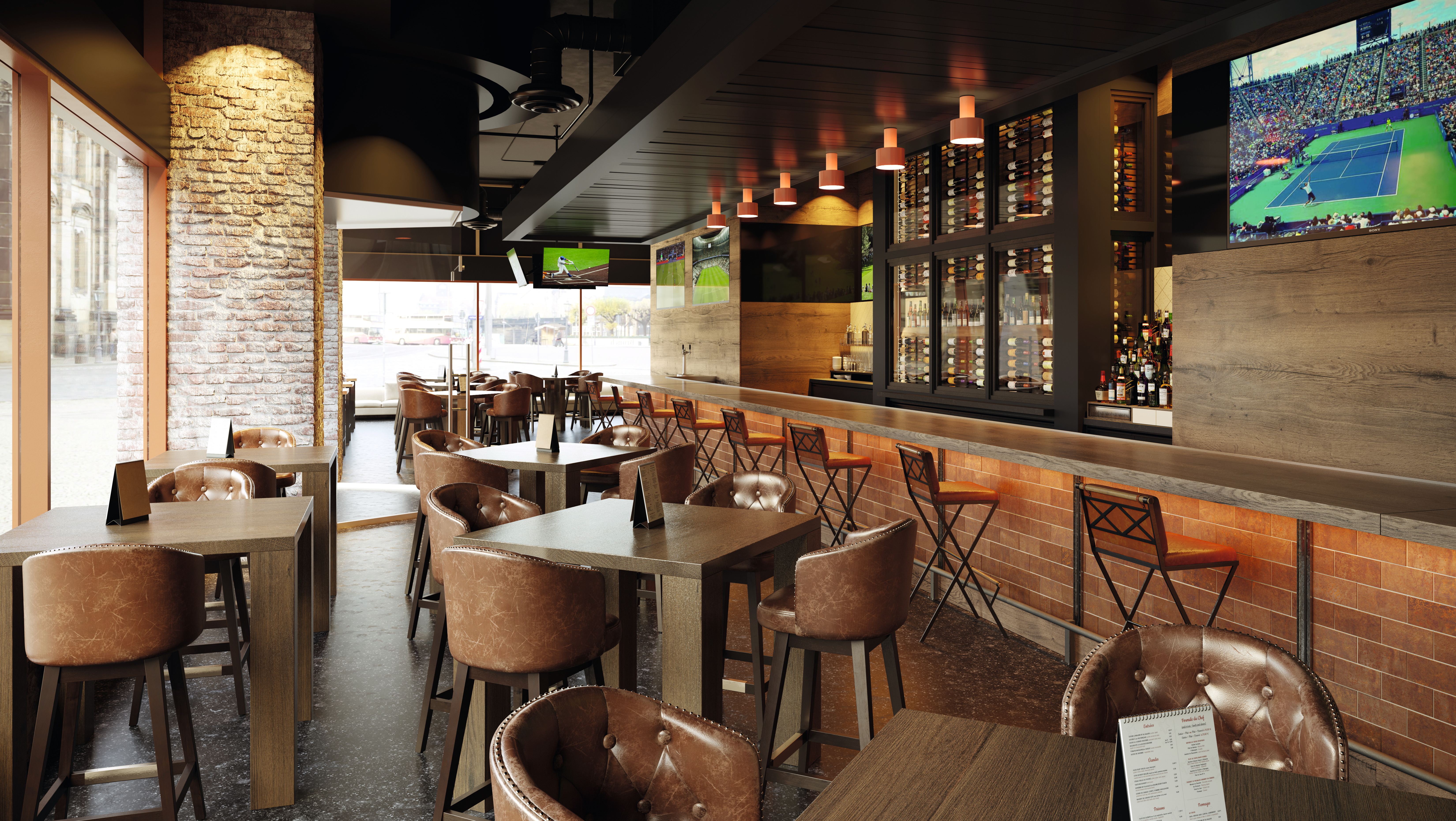
TFL and Laminates Share a Number of Advantages:
- Fade Resistant: Greater resistance to fading means the color lasts significantly longer than wood veneers
- Durable: Greater stain and scratch resistance, and holds up better to everyday wear and tear compared to wood veneers
- Variety: Wide range of decors and textures available
- Hygienic: Sealed, nonporous surface that is easy to clean
So why do TFL and laminates sometimes have a bad reputation? Many customers have a perception of laminate as cheap because they’ve been exposed to inferior products. Perhaps when they hear laminate they picture their grandmother’s countertop, with its “fake” plastic look and chipped appearance. High-quality laminates and TFL, like those manufactured by EGGER, are durable, have excellent performance features and are exceptionally authentic.
TFL and Laminates, Working in Harmony
In practical application, TFL and laminates work in harmony. There are some applications where laminates fit the bill and TFL doesn’t—for example, curved applications, or high-traffic horizontal surfaces, such as a countertop. It often makes sense to use both materials in projects, taking advantage of the cost and time savings of TFL where possible. Consider a walk-in closet space, where the closet frames, shelving and drawer/door fronts can be produced with TFL, while laminate is used on the top surface of a dresser that might have more wear and tear.
Working with decors from the EGGER Decorative Collection, you can combine matching TFL, laminates and edge banding to achieve harmonious, surface-to-edge designs, thanks to our
Decor Match System
. EGGER manufactures its TFL, laminates and edge banding all in house, delivering the best possible match in color and finish.
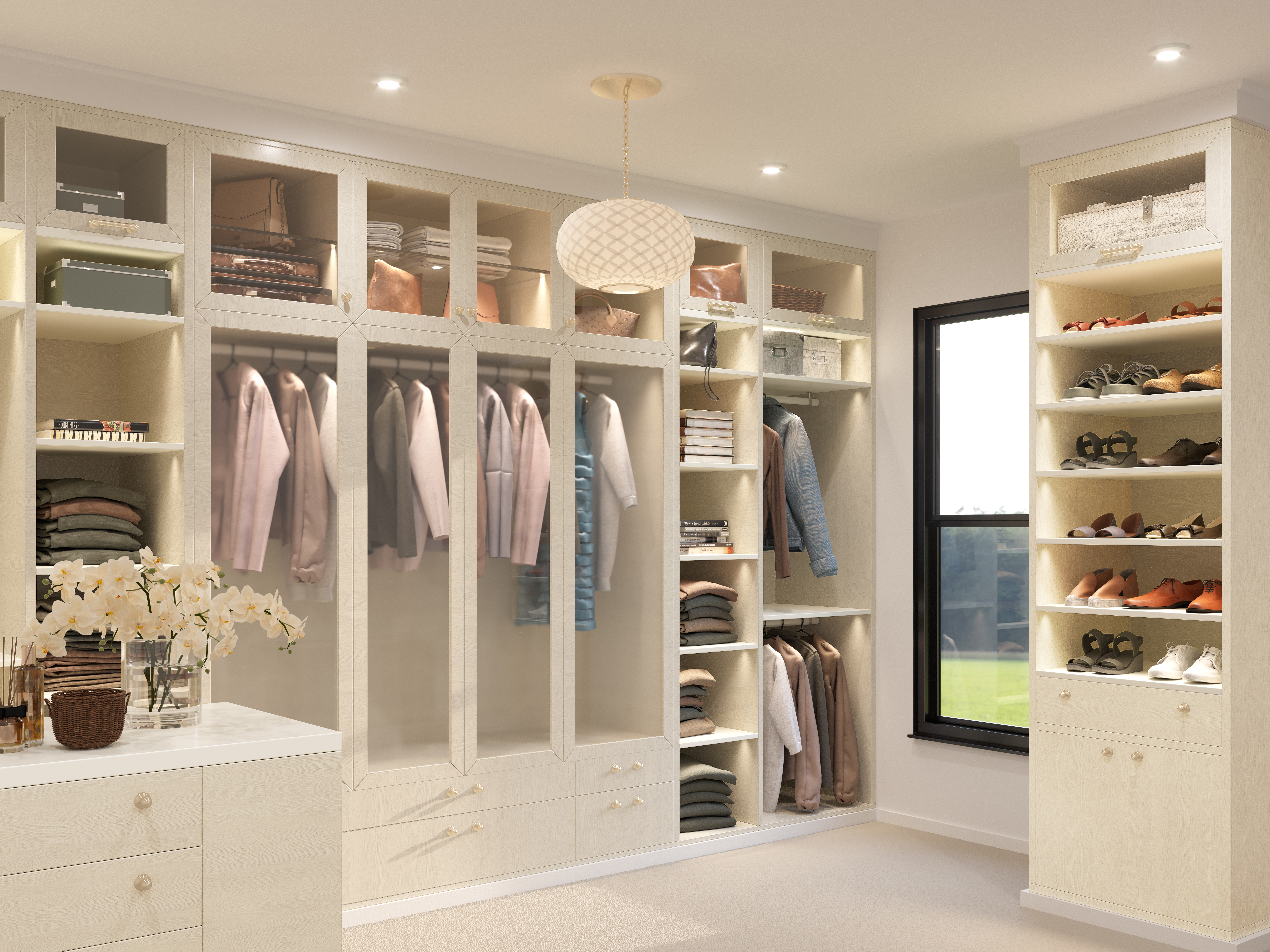
End Your Conversation with a Discussion About Value
As an architect, interior designer or millworker, surface material selection is a critical step in your project planning. Design, durability, cost and the specific demands of the project all come into play. Tying together all these considerations is the concept of value—minimizing the cost of a project while maximizing quality and performance.
